What Are the Common Etching Methods Reaction Mechanism of PCB Manufacturing?
By:PCBBUY 05/17/2024 16:06
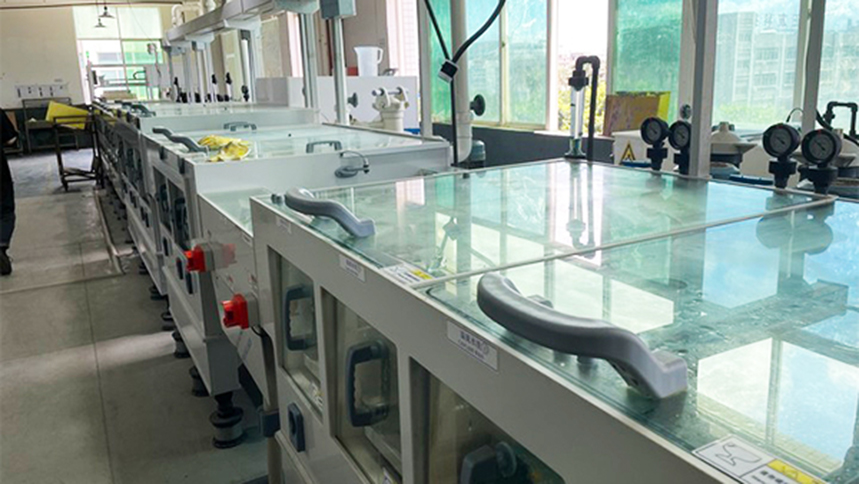
Etching is one of the most important processes in PCB manufacturing, and simply put, wet PCB etching is a process of corrosion control. Under normal circumstances, corrosion can damage the metal, but through efficient processing processes, corrosion can be controlled, a process called etching. Some wet etching processes are described in detail below.
What is PCB Etching?
PCB etching is the process of removing unwanted copper (cu) from a circuit board. If it is not needed, it is simply non-circuit copper removed from the board according to the PCB design, and the desired circuit pattern will be obtained.
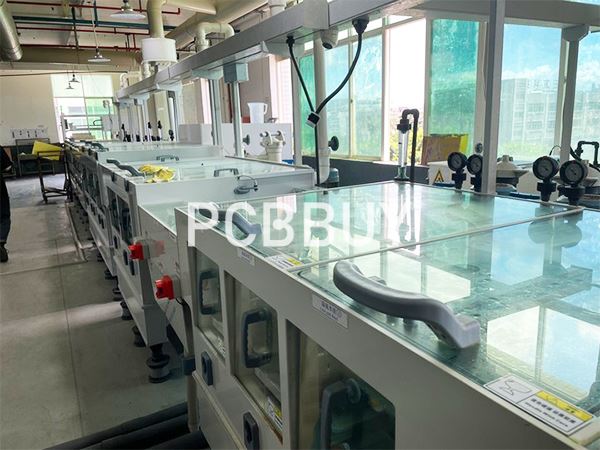
In other words, etching is like chipping away at a circuit board, for example, a board is a piece of rock, and etching chipping away at that rock into a beautiful sculpture. In this process, the substrate copper or starting copper is removed from the board, and both rolled and annealed copper are easily etched away compared to electroplated copper.
Lay out in advance before the etching process. There are two different methods of inner and outer etching. In the outer etching process, the nephew layer is plated as an resist. In the inner layer, the photoresist is the resist agent.
What Is Wet PCB Etching Process?
Wet etching is an etching process in which unwanted materials dissolve when immersed in a chemical solution.
Depending on the etching agent used, PCB manufacturers generally adopt two wet etching methods:
1. Acid etching (ferric chloride and copper chloride).
2. Alkaline etching (ammonia)
Acid etching
The acid method is used to etch the inner layer of a rigid PCB, which involves a chemical solvent such as ferric chloride FeCl3 or copper chloride (CuCI2). Compared to alkaline methods, acidic methods are more accurate, cheaper but more time consuming. This method is suitable for the inner layer because the acid does not react with the photoresist and does not damage the desired part. Also, in this method, the bottom cut is minimal.
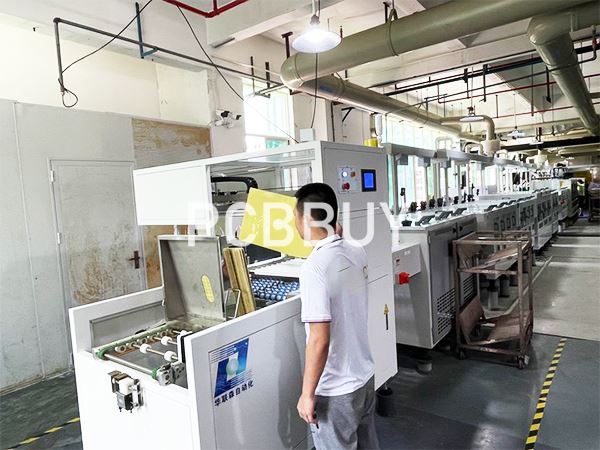
Main material
Copper chloride, ammonia water, amine chloride, a small amount of oxidant, corrosion inhibitor, etc
The bottom cut is the lateral decay that protects the etched material below the most lead layer. When the solution hits the copper, it attacks the copper and leaves behind protected tracks. Protect the track with an electroplated resist or an optical imaging resist. At the edge of the track, a certain amount of copper is always removed below the resist, which is called the bottom cut.
Copper chloride etching
Copper chloride is the most widely used etching agent because it can accurately etch smaller features. The copper ammonide process also provides a constant etching rate and continuous regeneration at a lower cost.
The maximum etching rate of copper chloride system depends on the combination of copper hydride, sodium ammonia-HCI system. The combination provides a maximum turbid etching rate of 55 seconds for 1 ounce of copper at 130°F. Therefore, this type of etching is used to etch the inner layer of fine lines
Note: The use of chlorine requires adequate ventilation and tank and cylinder storage and leak detection equipment. It also requires emergency protocols, personal protective equipment, trained operators, and approval from the fire department.
Main feature
1. The etching rate is easy to control, and the etching liquid can achieve high etching quality in a stable state
2. Large amount of dissolved copper
3. The etching fluid is easy to regenerate and recycle, thus reducing pollution
Control key points
Temperature, specific gravity and PH value
Etching rate
About 1mil/min
Main reaction mechanism
Copper etching reaction
Copper can exist in three oxidation states, the metal CU on the plate, the blue copper ion Cu(NH ~3~)~4~ 2+^ ^ in the etching bath, and the cuprous ion Cu(NH ~3~)~2~ ^1+^ in the intermediate state. Copper CU can be oxidized and dissolved by Cu(NH ~3~)~4~ ^2+^ in the etching tank solution, that is, the copper etching reaction is completed, see the following equation:
2Cu+2Cu (NH 3) 4Cl 2 →4Cu(NH 3)2Cl(Cuprous ion)
Regeneration reaction
The intermediate state cuprous Cu(NH 3)2 ^1+ 1+^ generated in the above equation is a light blue muddy sediment with poor solubility, and if it cannot be quickly removed, it will form a barrier to copper corrosion on the plate, so it must be assisted by etching the liquid (i.e., ammonia chloride and ammonia water) and a large amount of oxygen in the air. After a series of reactions, it continues to oxidize into soluble Cu(NH3)4 ^2+^, and then becomes a copper corrosion oxidizer, which continues to react with the metal copper CU on the surface of the plate, so that the etching liquid can bite off more metal copper CU. This is the recycling and regeneration reaction of the etching fluid, see the following equation:
4Cu(NH 3)2Cl+4NH 3 +4NH4Cl+O 2 →4Cu(NH 3 )4Cl 2 +2H2O
Net reaction
2Cu+4NH 3 +4NH4Cl+O 2 → 4Cu(NH 3 )4Cl2 +2H2O
Iron trioxide etching
Due to the high processing cost of copper-containing etching agents, the use of ferric chloride etching agents in industry is limited. However, ferric chloride is an attractive spray etcher because of its ease of use, its ability to retain copper, and its ability to be used in infrequent batch applications. Ferric chloride can be used with screen inks, photoresist, and gold patterns, but not with tin or tin/lead resist.
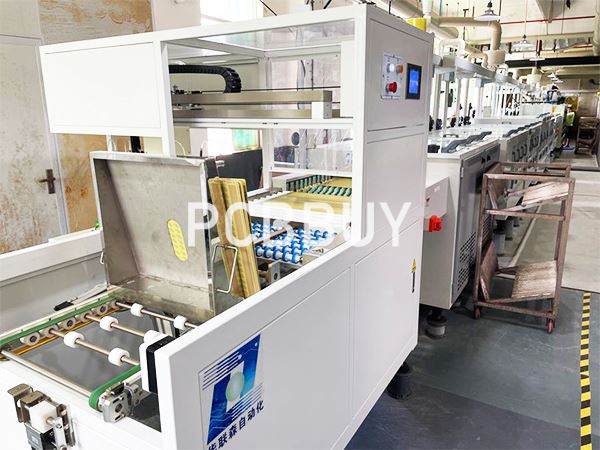
Typically, ferric chloride solutions are dissolved in water with concentrations ranging from 28-42% (by weight). HCI (up to 5%) is also mixed with this solution to prevent the formation of insoluble iron hydroxide precipitates.
Commonly used ferric chloride has a specific gravity of 36 Be, or about 4.0lb/gal FeCI3. The amount of acid (HCL) for commercial use is within 1.5 to 2%.
Alkaline etching process
The alkaline method is used to etch the outer layer of the PCB. Here, the chemical used is a copper chloride (CUCL2) decarbonate (HCI)+ hydrogen peroxide (H2O2) + water (H 20) composition. The alkaline method is a quick process and also a bit expensive. The parameters of this process must be carefully followed, as the process must be well controlled if prolonged exposure to the solvent can damage the circuit board.
The entire process is carried out in the air with a conveyor belt high-pressure spray, with the PCB board hanging in a fresh spray of etching agent. Some important parameters need to be tested in alkaline PCB etching. They are the rate at which the panel moves, the chemical spray and the amount of copper to be etched away. This ensures that the etching process is evenly completed through the straight side wall.
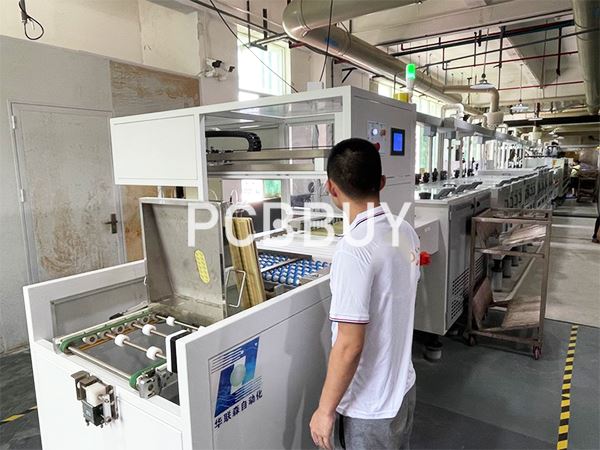
In the etching process, the point at which the unwanted copper etching is completed is the breakpoint. This is usually achieved by atomizing the chamber to the midpoint. For example, if the atomization chamber is 2 meters long, the breakpoint will be reached when the board reaches the midpoint, i.e., 1 meter.
Parameters that define the quality of the etching agent
Under ideal conditions, the etching rate depends on the etching time and the etching agent composition will be constant. But in practice, the composition of the etching agent will constantly change. Therefore, in order to ensure quality, we must control some parameters.
The following parameters are used to evaluate the quality of the etching agent to ensure that the process is running smoothly:
Baume
Temperature
REDOX potential (ORP)
Chemical additive (free acid)
Ph (pH)
1. Baume (Be)
Baume is the molar concentration of the etching agent, depending on the specific gravity of the etching agent.
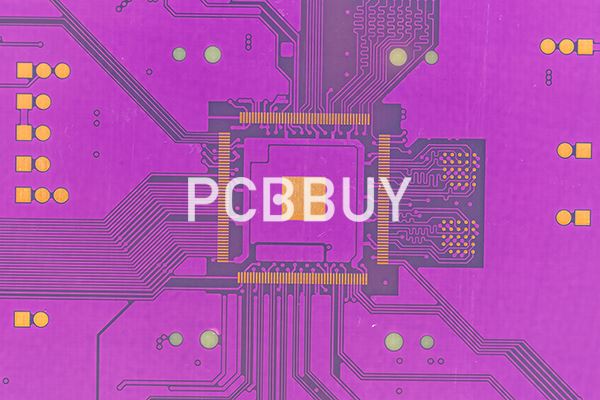
The higher the Baume value, the higher the molar concentration of the etching agent, and therefore the higher the etching rate of the solution. Lower valet values will produce low etching rates and poor line resolution, while higher etchers will produce more expansive etching rates. The base cut also decreases with the increase of Baume value.
2. Temperature
In general, the etching rate of any etching agent will be higher at high temperatures, but the choice of etching temperature depends on the etching machine used. Most etchers use plastic parts because all metals are reactive to the etcher. Therefore, the etching temperature should not be too high. The maximum allowable etching temperature range is 50-55 ° C.
3. REDOX potential (ORP)
The measurement of ORP indicates the activity of the turbid etching agent, which is a measure of the relative conductivity of the etching agent expressed in mV. ORP represents the relationship between copper ions and cuprous ions or iron ions and ferrous ions. With the etching of copper, the etching agent changes from iron to cuprous/ferrous state.
The higher the ORP value, the higher the efficiency of the etching agent, and the lower the 0RP value indicates the slow speed and low efficiency of the etching agent.
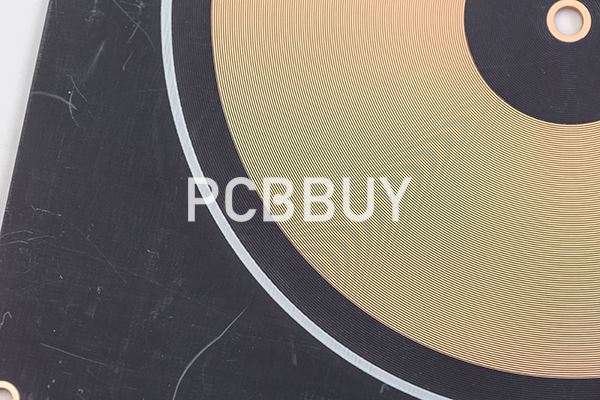
Manufacturers keep ORP at a high constant value to achieve a constant etching rate of the metal. ORP is affected by free acid content and etching temperature. Adding free acids and oxidants to the etching agent produces free chlorine, which returns cuprous ions to the copper form.
4. Add chemical additives (free acid)
Chemical additives are used in commercial etching agents to increase etching rates. HCI is an additive for CuCl2 and FeCI3 etchers. HCI is a source of chlorine that forms metal chloride instead of hydroxide, thereby increasing the ability of the etching agent to hold dissolved metals. Additives are very important for the continuous etching process. They are added before the first application of the etching agent or during regeneration. Evaluate the pH of the solution to check the acidity of the solution.
The addition of additives increases the complexity of the etching agent, but it provides a higher etching rate, and it also increases the solubility of the etching agent. The addition of additives will increase the etching rate, but the concentration of additives depends on the machine used. High concentrations of HCL can cause the acid to react with the etcher parts.
5. PH value
PH is an important parameter in the etching process, especially for alkaline chlorine corrosion. For reliable alkaline etching. The pH value is a very important parameter in the etching process, especially for alkaline chlorine etching. For reliable alkaline etching, it is between 7.9 and 8.1. Low ammonia, excessive ventilation, heating, etc. may result in a pH below 8. In this case, the pH can be increased by adding anhydrous ammonia. Higher pH values above 8.8 will also result in low etching rates. This may be due to insufficient ventilation, higher copper content, or water in the etching agent.
In the case of the acid etching method, the pH value is used for solution control. An increase in pH will cause the solution to become cloudy resulting in an incorrect reading of the copper colorimeter.
6. Continuous etching and regeneration
Continuous etching is a method used for commercial etching of PCBS that enables the automatic control of the etching agent feed. The parameter to be controlled in such systems is the specific gravity or density of the etching agent.
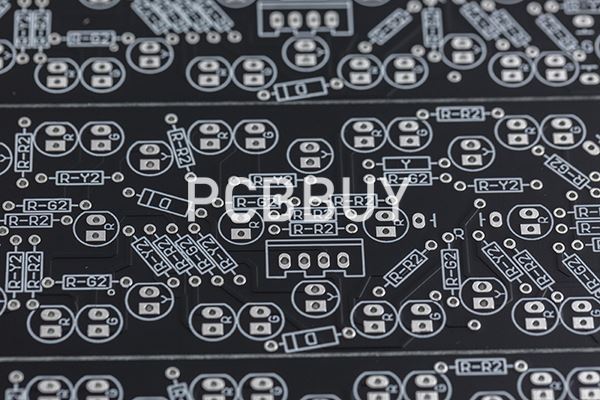
As copper is dissolved in the etching agent, the density of the etching agent increases. To assess the volume of copper in the solution, measure the density of the etching agent in the etching agent. When the density upper limit is recorded in the density sensor, the switch activates the pump. The pump automatically feeds the etching agent into the etching machine. At the same time, the system eliminates the waste etching agent.
For uninterrupted production in such systems, the regeneration of the etching agent is an important factor. Regeneration is the process of recovering a used etching agent and returning that agent to the etching process. When regeneration is continuous, constant etching conditions will be achieved.
In order to solve the waste problem in the etching industry, the waste etching agent regeneration process was developed. There are other benefits to using the regeneration process. Such as saving equipment and operating costs, and significantly reducing the liability associated with the handling of bending etching agents.
What is an acid trap?
Acid trap is a key factor affecting online PCB performance. Specifically, it is caused by the inability of the chemical solution to wash off the plate during the etching process. The solution stays in that area and stains the copper trace and other parts of the board, resulting in open or short circuits and connection errors.
Acid traps are not easily detected. Checking beforehand only lowers the wind face. If it is not detected at the right time, the board may not work properly.
The role of acid trap
Traces: Copper traces are greatly affected by acid traps. The acid seeps into the trace, forming an isolation zone, and spreads to the rest of the circuit. Gradually, the circuit board lost its connectivity.
Through hole: If acid enters through hole, it may cause corrosion. An open through hole causes acid to flow to the trace and impedes the circuit connection. Acid traps can even attack through holes that are tightly connected with minimal spacing.
Connectors: Connectors are welded to pads that are basically copper sheets. Material connectors can also be affected if acid flows into the pad.
Solder resistance layer: Solder resistance layer can be eroded by exposing acid traps.
What are the causes of acid traps?
Wiring is connected at an acute Angle: This is the most common cause of acid traps. If traces meet at an acute Angle of less than 90°, an acid trap may occur.
It can form at sharp corners even at 90°. To prevent this, connect the wires at 45°.
Minimum space between wiring, hole, and pad: The minimum gap between the edge of the circuit board in the wiring or hole room can allow corrosive solution to seep into the wiring and cause breakdown. This is a major problem when the wiring is thin, as the copper corrodes easily in this case. You can use the design tool to calculate the correct spacing value and change accordingly to reduce the possibility of acid traps.
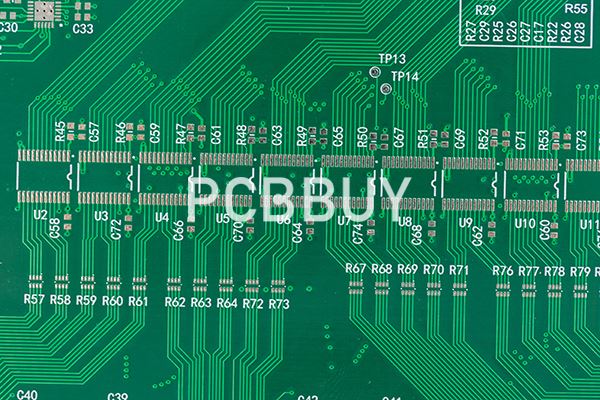
Through tents and clogging are also possible solutions to minimize damage.
Isolated copper areas: Abandoned copper areas are called copper islands or dead copper areas. Often, the island was left behind intentionally or unintentionally. It's an easy target for acids to fall into. Advanced design tools can help you remove these dead zones. It is important to be aware of this fact to eliminate the risk of acid traps.
DRC error: You can rely on visual design tools to detect acid traps or their extent. But sometimes small gaps and marks that connect angles to acute angles may not be detected in these tools. Therefore, it is necessary to set the correct Settings for careful Design Rule Check (DRC) procedures.
Advantages and disadvantages of wet PCB etching
Advantages of wet PCB etching
· It can be carried out in a normal atmospheric environment
· High etching rate
· Low operating cost
· High selectivity: Wet etching can be used to etch a variety of materials
· Easy maintenance of equipment
Shortcomings of wet PCB etching
· Etching trace < 1um power is insufficient
· Heavy use of chemicals
· Produce large amounts of hazardous chemical waste
· Risk of wafer contamination
· Chemical hazard
· Direct contact liquid
· Direct and indirect exposure to smoke
After the etching process, the final product will have a circuit that meets the designer's specifications. Shortly after the etching is complete, the board is further treated for stripping, a process that removes plated tin or tin/lead or photoresist from the surface of the board.
Reference
He Wei, PCB Basic Electrical Information Science and Technology, China Machine Press,126-132
Industry Category











